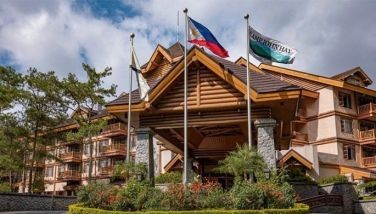Yes to “pedestrianization”
The pedestrianization plan for portions of Colon Street and the rest of the downtown area, which is a component of the Cebu Bus Rapid Transit (CBRT) Link to Port project, is worth a try despite being a hard sell to many who still view urban road networks as a primary route for vehicles.
This view is admittedly very hard to change, considering the many private vehicle owners in Metro Cebu who believe that their cars should be given priority on our roads, which they think should be widened as a solution. That is probably why BRT project managers are busy these days posting photos of their pedestrianization plan on the social media accounts of Cebu news media.
The plans based on the “conceptual image” that help visualize the scenario of pedestrianization are impressive. The downtown area of the city, despite being a de facto heritage district, has been neglected for so long that city residents rarely visit these areas anymore. But with a pedestrianization scenario, I could imagine myself parking my car somewhere in the uptown area of the city, then proceeding downtown by taking public transport and alighting where the pedestrian-friendly pathways begin.
But many people do not share the same sentiment, particularly private vehicle owners. I’m sure some of them have been to Singapore and other pedestrian-friendly, car-minimal cities around the world, but when it comes to their own city, the mindset is still, “I am a car owner; I should be prioritized in road infrastructure.”
We have already reached a saturation point in our road systems. Even if we widen more roads or open new road networks (which is hard to do in Cebu City), the sheer number of private vehicles would still overwhelm the roads. The solution is fewer private vehicles, more mass transport system vehicles, and more wide, comfortable, and well-designed pathways for pedestrians and bikers.
We need to change our thinking about how roads should be used. Numerous studies and cases have proven that transforming our road systems toward sustainable designs that prioritize pedestrians and mass commuters over private vehicle owners can truly turn urban decay into urban renewal.
A study by Soni & Soni (Land Use Policy Journal, 2016) states that the only feasible way to upgrade mobility and environment in high-density areas is to pedestrianize them. It is a very effective, low-cost, and sustainable solution. The study discusses various benefits of pedestrianization, highlighting improvements in mobility and accessibility, reduced car use and congestion, and increased use of public transport and non-motorized transport.
Socially, pedestrianization fosters face-to-face interactions, enhances security, and preserves heritage sites. Environmentally, it leads to better air quality and noise reduction, and improved micro-climates, with reclaimed spaces used for greenery and public amenities. Economically, pedestrianized areas see increased foot traffic, higher sales, and rental values, contributing to local business and job creation. Even as far back as three decades ago, studies in Europe have already shown the benefits of pedestrianization. (Hass-Klau, 1993).
Of course, we are a developing country, pedestrianization in a third-world city certainly offers a contrasting setting, right? In Kathmandu, Nepal (Parajuli & Pojani, 2017), pedestrianization of its historic center has faced strong opposition from residents, motorists, and local businesses. Opponents cited challenges in cost recovery, access for delivery vehicles, and alternative transport, among others. In reality, these barriers are heavily influenced by a dominant car culture.
In the few pedestrianized areas of Kathmandu, locals and tourists have seen the benefits of a zone prioritizing pedestrians. Still in most parts, however, the city is known for its notorious traffic jams despite billions spent on widening roads.
- Latest






















